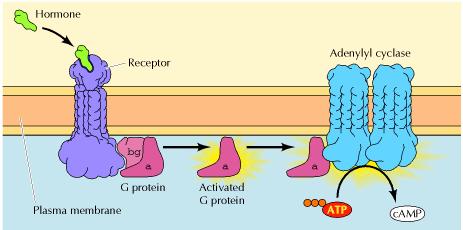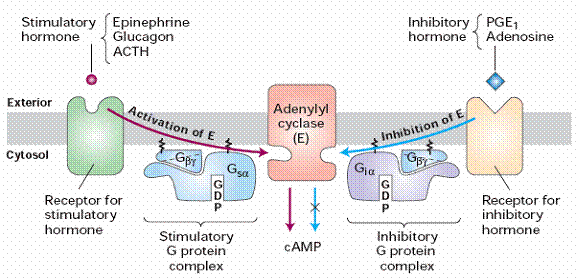

The majority of ACs are indirectly activated by various stimuli including adrenergic agonists, which bind to G protein coupled receptors (GPCRs) on the cell membrane resulting in the activation of the GPCR and release of the Gα s subunit that is subsequently responsible for binding to and activating AC, thus stimulating the production of cAMP. Differing primarily in tissue distribution and subcellular localization, nine membrane-bound and one soluble AC have been identified in mammals. As reviewed previously and depicted in Figure 1B, cAMP is produced from its precursor, ATP, through the catalytic activity of the ACs. Both ACs and PDEs are regulated by numerous signaling pathways including, calcium signaling through calmodulin (CaM) and calcineurin, G-proteins, inositol lipids (e.g., PKC) and receptor tyrosine kinases. The intracellular level of the second messenger, cAMP, is regulated by opposite activities of two enzymes, adenylyl cyclase (ACs) and PDEs. Both the amplitude and duration of a cyclic nucleotide signal also varies and is largely dependent on the expression and activity levels of cyclic nucleotide phosphodiesterase (PDE) enzymes, which catalyze the hydrolytic breakdown of cyclic nucleotides.įirst described in the late 1950s, cAMP is the more well studied of the cyclic nucleotides. Once formed, the cyclic nucleotide will affect the activity of downstream effector molecules including kinases, ion channels, transcription factors, and scaffolding proteins. Cyclic GMP can also be degraded by PDEs (PDE1, 2, 3, 5, 6, 9, 10, or 11). cGMP signaling can lead to the regulation of other PDEs, PKG and ion channels. C, production of cGMP by guanylyl cyclase (GC) can be regulated by nitric oxide (NO) and PKG. Cyclic AMP can also be degraded by PDEs (PDE1, 2, 3, 4, 7, 8, 10, or 11) and cGMP can inhibit selective PDE cAMP degrading activity. cAMP signaling can lead to the activation of PKA, EPAC and ion channels. B, production of cAMP by adenylyl cyclase (AC) can be regulated by GPCR and PKA. A, demonstrates cyclic nucleotide (cNT) production through nucleotide precursor (NTP) and activation of selective cyclase and activation receptor and intracellular response or degradation of cNT through phosphodiesterase (PDE) activity.


Generalized illustrations of cyclic nucleotide signaling ( A) cAMP signaling ( B) and cGMP ( C). These findings suggest that targeting cyclic nucleotide signaling can provide a strategy for the discovery of novel agents for the prevention and/or treatment of selected cancers. While the distinct molecular alterations responsible for these effects vary depending on the specific cancer type, several studies have demonstrated that activation of cyclic nucleotide signaling through one of three mechanisms-induction of cyclic nucleotide synthesis, inhibition of cyclic nucleotide degradation, or activation of cyclic nucleotide receptors-is sufficient to inhibit proliferation and activate apoptosis in many types of cancer cells. In addition, altered cyclic nucleotide signaling has been observed in a number of pathophysiological conditions, including cancer. Under normal physiological conditions, cyclic nucleotides regulate a myriad of biological processes such as cell growth and adhesion, energy homeostasis, neuronal signaling, and muscle relaxation. For more than four decades, the cyclic nucleotides cyclic AMP (cAMP) and cyclic GMP (cGMP) have been recognized as important signaling molecules within cells.


 0 kommentar(er)
0 kommentar(er)
